Silicon-Based Metastructure Optical Scattering Multiply–Accumulate Computation Chip
Abstract
:1. Introduction
2. Inverse Design Methodology
3. Four-Channel CWDM Chip Topology Optimization
3.1. Inverse Design
3.2. Forward Verification
3.3. DFM Strategy for Mask Design
4. Inverse Design of OSU Chip
5. Conclusions
Author Contributions
Funding
Institutional Review Board Statement
Informed Consent Statement
Data Availability Statement
Acknowledgments
Conflicts of Interest
References
- Zaharia, M.; Chowdhury, M.; Das, T.; Dave, A.; Ma, J.; McCauley, M.; Franklin, M.J.; Shenker, S.; Stoica, I. Resilient distributed datasets: A fault-tolerant abstraction for in-memory cluster computing. In Proceedings of the 9th USENIX Conference on Networked Systems Design and Implementation, San Jose, CA, USA, 25–27 April 2012. [Google Scholar]
- Sebastian, A.; Le Gallo, M.; Khaddam-Aljameh, R.; Eleftheriou, E. Memory devices and applications for in-memory computing. Nat. Nanotechnol. 2020, 15, 529–544. [Google Scholar] [CrossRef] [PubMed]
- Waldrop, M.M. The chips are down for Moore’s law. Nature 2016, 530, 144–147. [Google Scholar] [CrossRef] [PubMed] [Green Version]
- Goodfellow, I.; Bengio, Y.; Courville, A. Deep Learning, 1st ed.; MIT Press: Cambridge, MA, USA, 2016; pp. 267–320. [Google Scholar]
- Huang, C.; Sorger, V.J.; Miscuglio, M.; Al-Qadasi, M.; Mukherjee, A.; Lampe, L.; Nichols, M.; Tait, A.N.; de Lima, T.F.; Marquez, B.A.; et al. Prospects and applications of photonic neural networks. Adv. Phys. X 2022, 7, 1981155. [Google Scholar] [CrossRef]
- Shen, Y.C.; Harris, N.C.; Skirlo, S.; Prabhu, M.; Baehr-Jones, T.; Hochberg, M.; Sun, X.; Zhao, S.J.; Larochelle, H.; Englund, D.; et al. Deep learning with coherent nanophotonic circuits. Nat. Photonics 2017, 11, 441–447. [Google Scholar] [CrossRef]
- Lin, X.; Rivenson, Y.; Yardimei, N.T.; Veli, M.; Luo, Y.; Jarrahi, M.; Ozcan, A. All-optical machine learning using diffractive deep neural networks. Science 2018, 361, 1004–1008. [Google Scholar] [CrossRef] [PubMed] [Green Version]
- Qu, Y.R.; Zhu, H.Z.; Shen, Y.C.; Zhang, J.; Tao, C.N.; Ghosh, P.T.; Qiu, M. Inverse design of an integrated-nanophotonics optical neural network. Sci. Bull. 2020, 65, 1177–1183. [Google Scholar] [CrossRef]
- Zhang, H.; Gu, M.; Jiang, X.D.; Thompson, J.; Cai, H.; Paesani, S.; Santagati, R.; Laing, A.; Zhang, Y.; Yung, M.H.; et al. An optical neural chip for implementing complex-valued neural network. Nat. Commun. 2021, 12, 457. [Google Scholar] [CrossRef] [PubMed]
- Bozeat, R.J.; Day, S.; Hopper, F.; Payne, F.P.; Roberts, S.W.; Asghari, M. Silicon based waveguides. In Silicon Photonics; Pavesi, L., Lockwood, D.J., Eds.; Topics in Applied Physics; Springer: Berlin, Germany, 2004; Volume 94, pp. 269–294. [Google Scholar]
- Chih, H.C. New Design Method in Silicon Photonics with ANSYS Lumerical—Brief Introduction of Inverse Design. In Proceedings of the Ansys Innovation Conference 2020, Online, 17–18 September 2020; Available online: https://hmediastorageansi.blob.core.chinacloudapi.cn/t-1-resource/bbc60e8f-78d1-9dac-f16a-5ff8a6b835be.pdf (accessed on 1 May 2021).
- Molesky, S.; Lin, Z.; Piggott, A.Y.; Jin, W.L.; Vuckovic, J.; Rodriguez, A.W. Inverse design in nanophotonics. Nat Photonics 2018, 12, 659–670. [Google Scholar] [CrossRef] [Green Version]
- Lin, Z.; Johnson, S.G. Freeform inverse design in photonics by re-thinking the questions. In Proceedings of the 19th International Conference on Numerical Simulation of Optoelectronic Devices (NUSOD), University of Ottawa, Ottawa, ON, Canada, 8–12 July 2019; pp. 1–2. [Google Scholar]
- Roques-Carmes, C.; Lin, Z.; Christiansen, R.E.; Salamin, Y.; Kooi, S.E.; Joannopoulos, J.D.; Johnson, S.G.; Soljacic, M. Toward 3D-Printed Inverse-Designed Metaoptics. ACS Photonics 2022, 9, 43–51. [Google Scholar] [CrossRef]
- Lumerical. Available online: https://support.lumerical.com/hc/en-us/articles/360049853854 (accessed on 1 May 2021).
- Lalau-Keraly, C.M.; Bhargava, S.; Miller, O.D.; Yablonovitch, E. Adjoint shape optimization applied to electromagnetic design. Opt. Express 2013, 21, 21693–21701. [Google Scholar] [CrossRef] [PubMed] [Green Version]
- Keraly, C.L.; Bhargava, S.; Ganapati, V.; Scranton, G.; Yablonovitch, E. Shape Optimization of Nanophotonic Devices Using the Adjoint Method. In Proceedings of the Conference on Lasers and Electro-Optics (CLEO), San Jose, CA, USA, 8–13 June 2014. [Google Scholar]
- Zhou, M.D.; Lazarov, B.S.; Wang, F.W.; Sigmund, O. Minimum length scale in topology optimization by geometric constraints. Comput. Meth. Appl. Mech. Eng. 2015, 293, 266–282. [Google Scholar] [CrossRef] [Green Version]
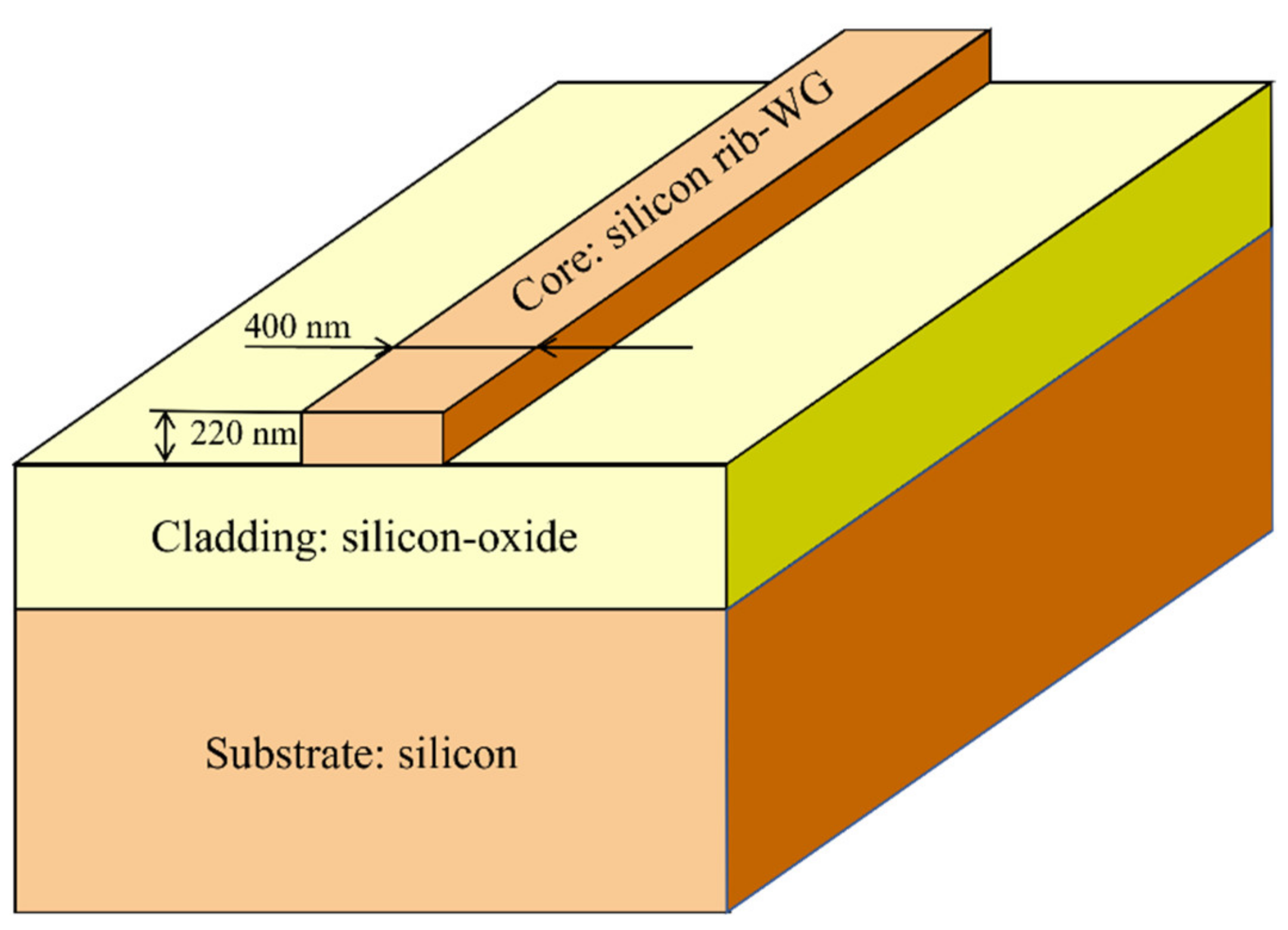

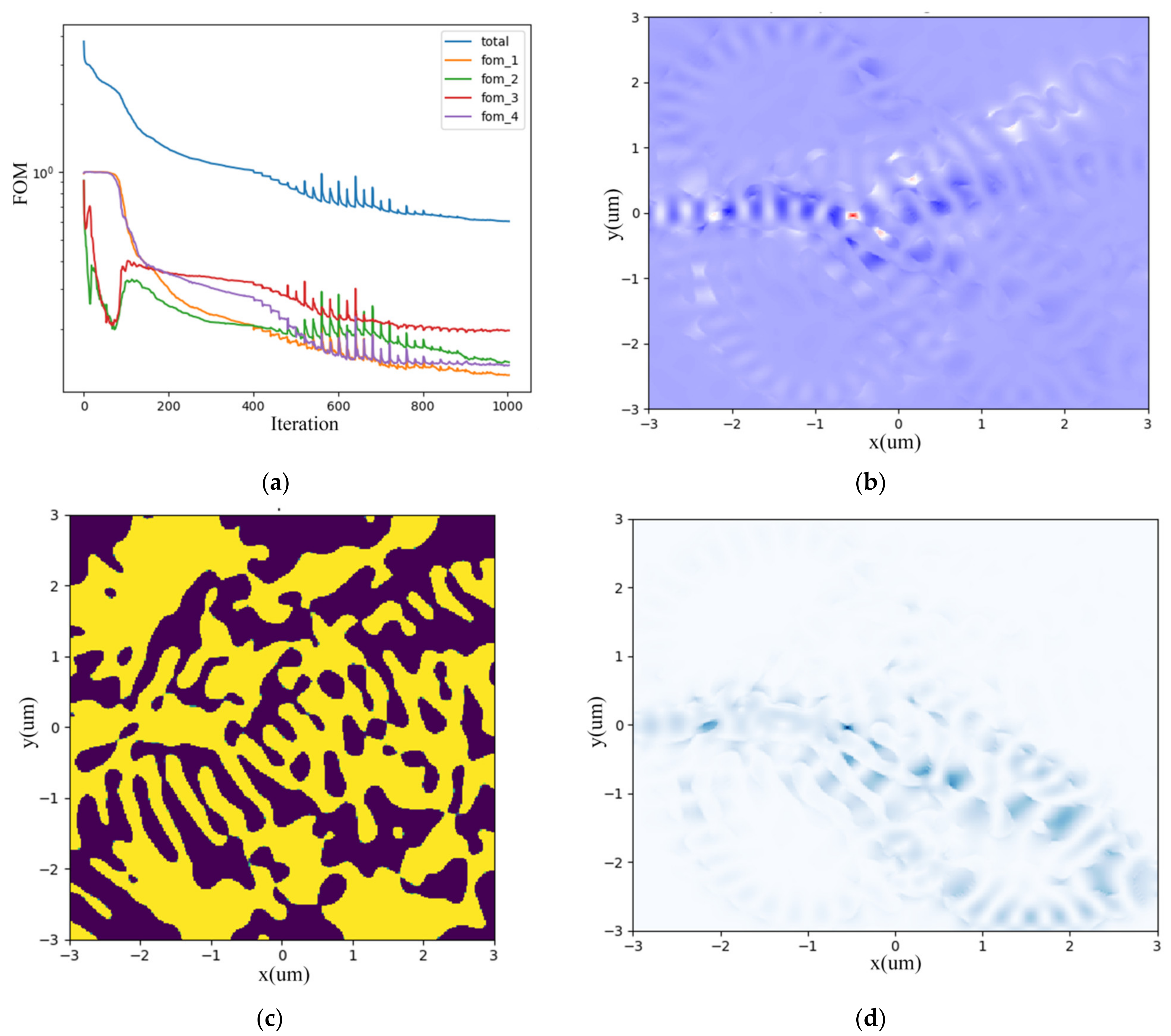


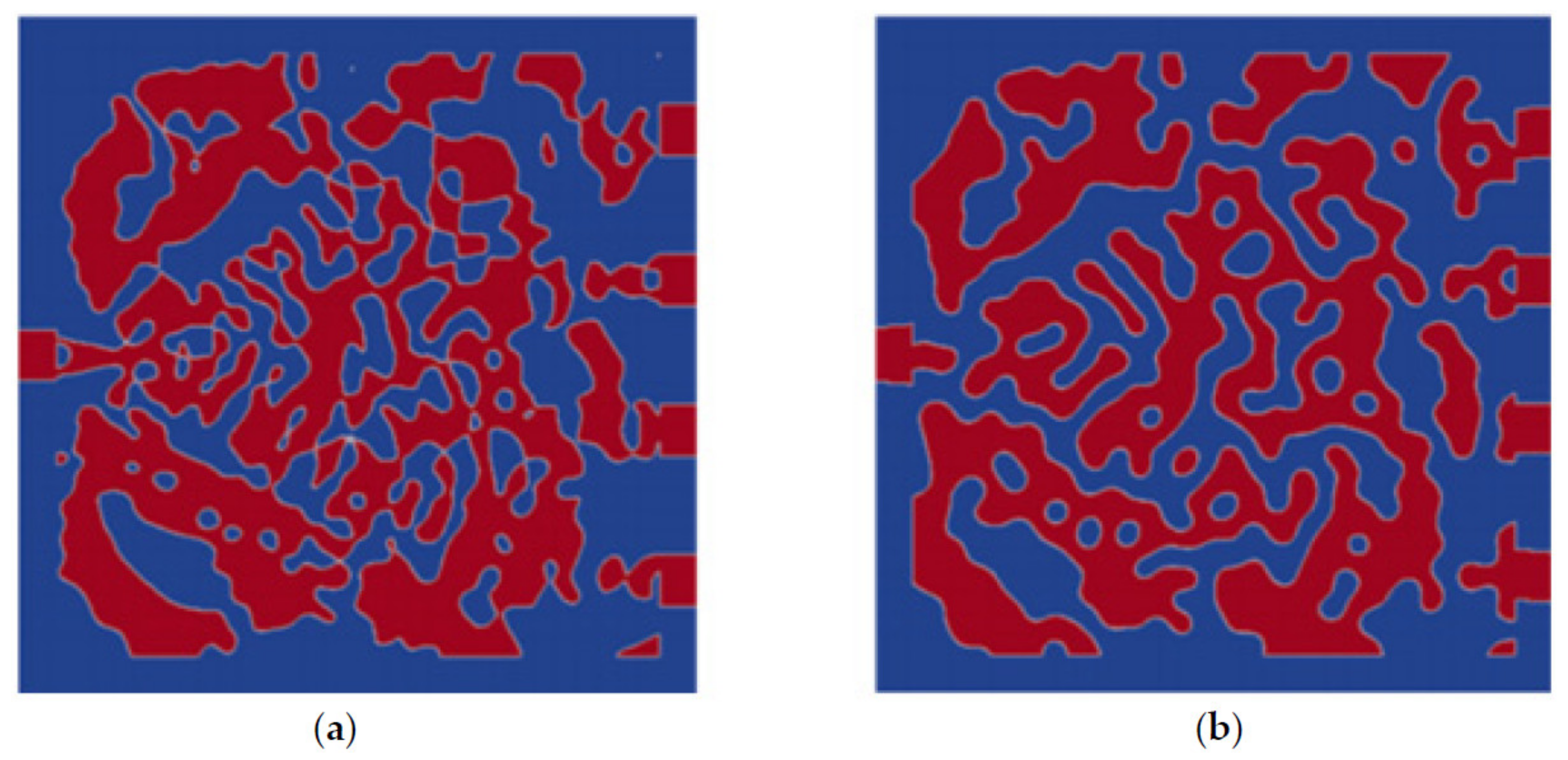
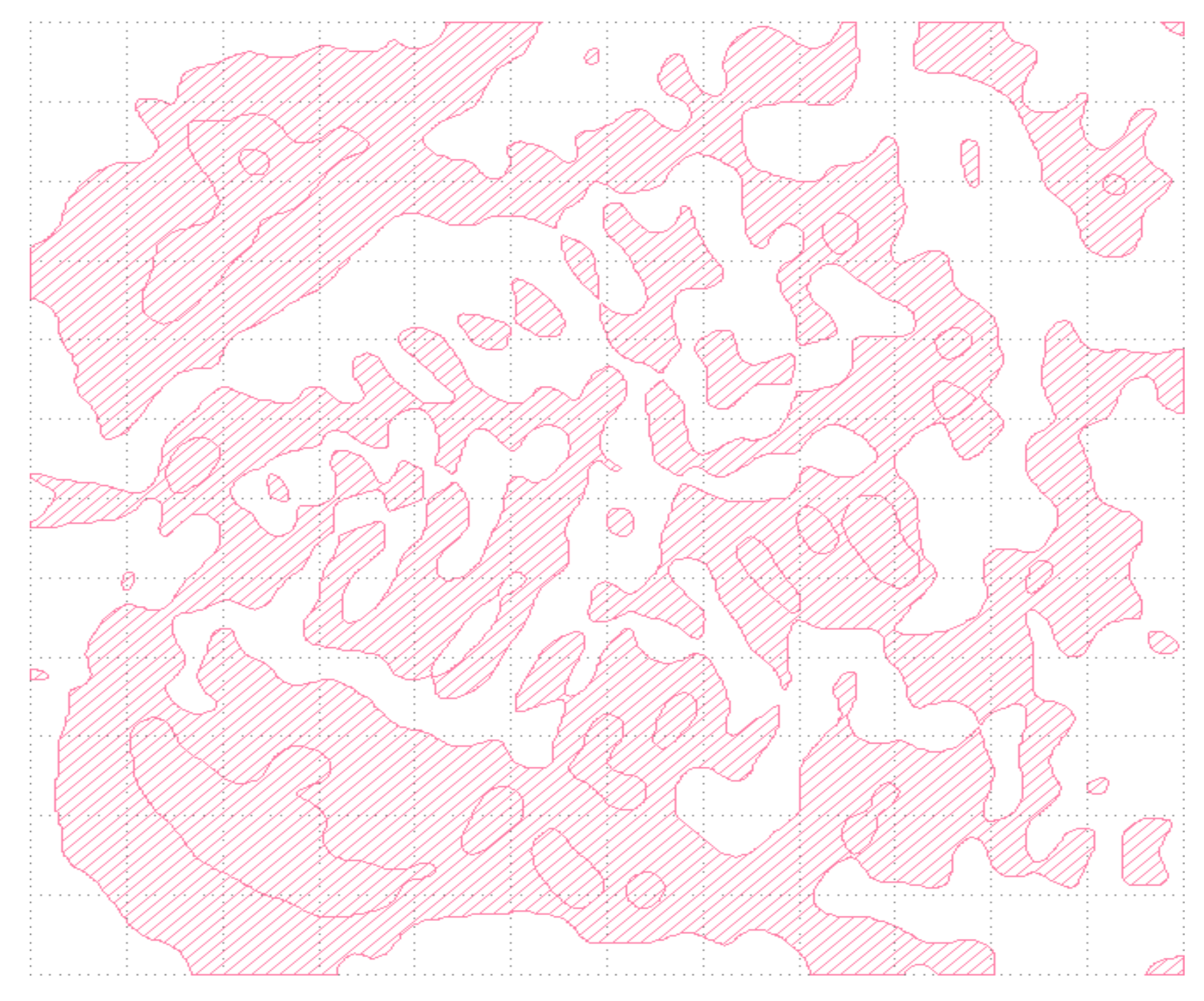

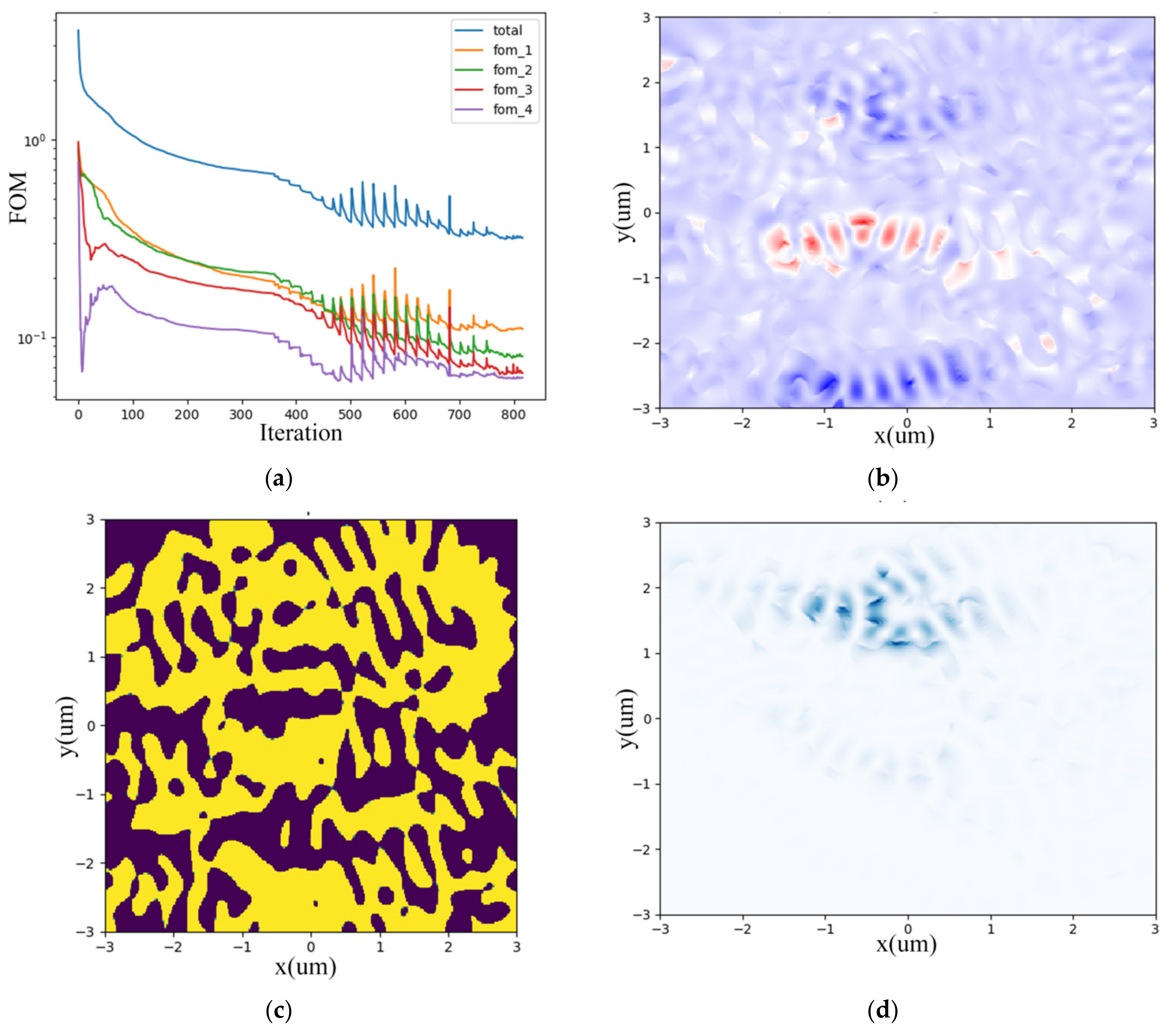
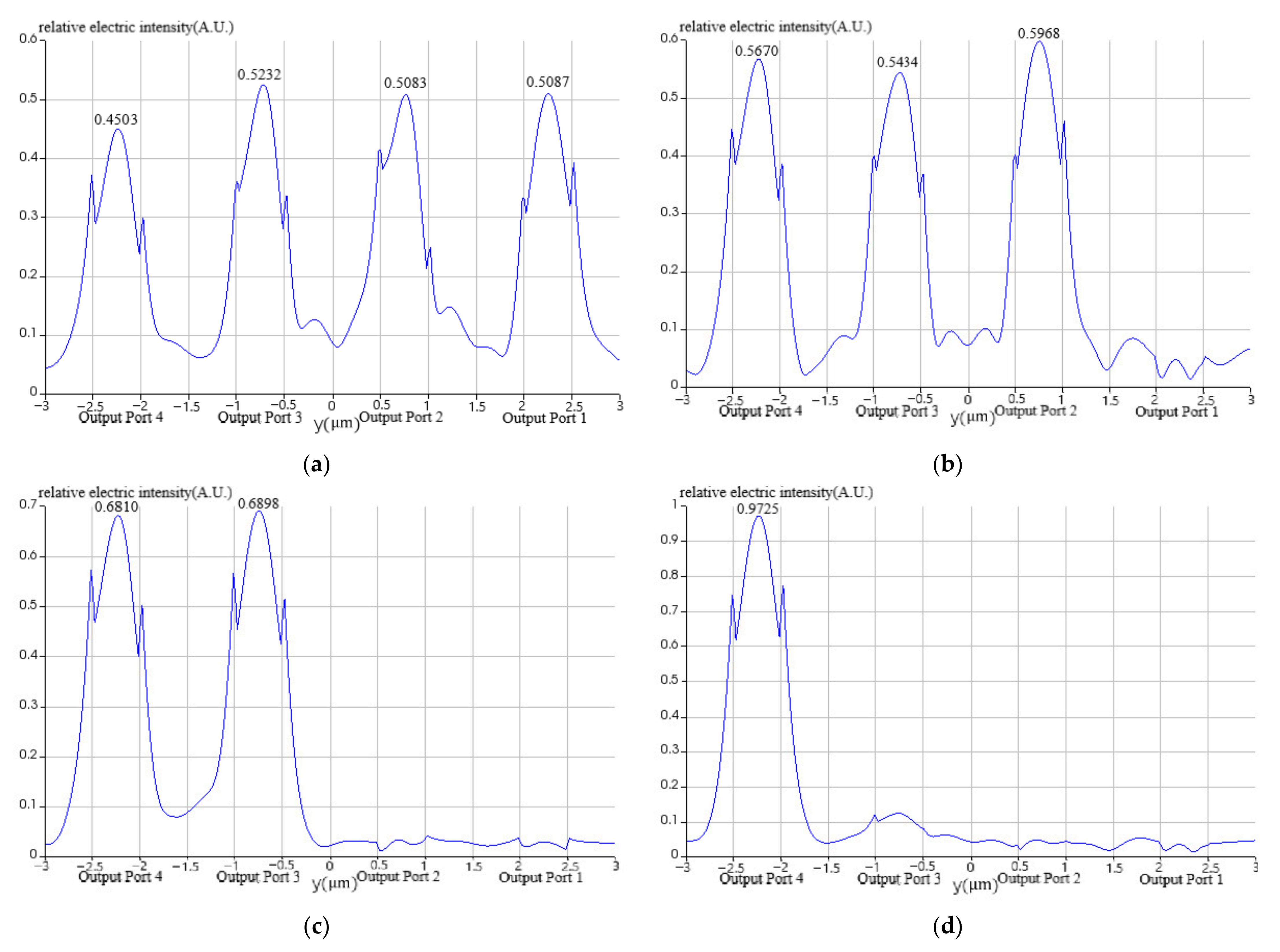


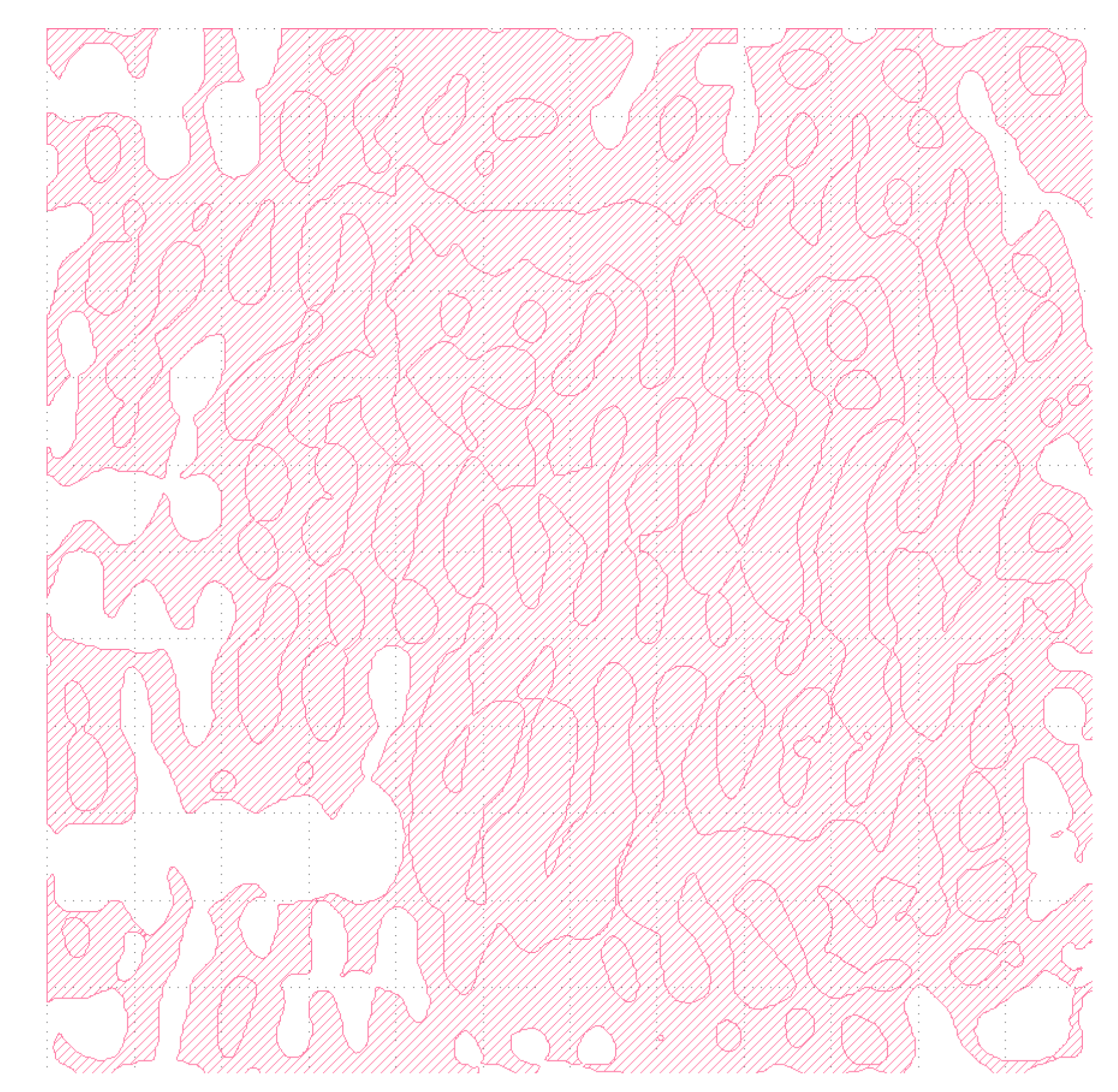
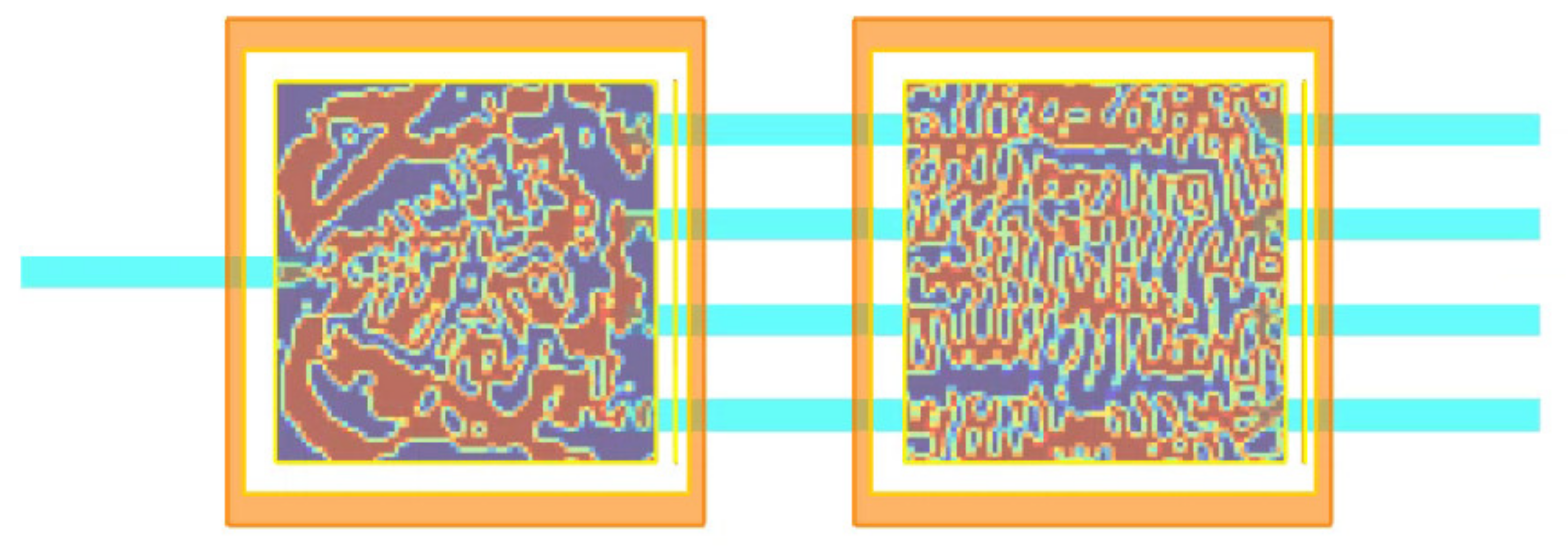
Publisher’s Note: MDPI stays neutral with regard to jurisdictional claims in published maps and institutional affiliations. |
© 2022 by the authors. Licensee MDPI, Basel, Switzerland. This article is an open access article distributed under the terms and conditions of the Creative Commons Attribution (CC BY) license (https://creativecommons.org/licenses/by/4.0/).
Share and Cite
Liu, X.; Zhu, X.; Wang, C.; Cao, Y.; Wang, B.; Ou, H.; Wu, Y.; Mei, Q.; Zhang, J.; Cong, Z.; et al. Silicon-Based Metastructure Optical Scattering Multiply–Accumulate Computation Chip. Nanomaterials 2022, 12, 2136. https://doi.org/10.3390/nano12132136
Liu X, Zhu X, Wang C, Cao Y, Wang B, Ou H, Wu Y, Mei Q, Zhang J, Cong Z, et al. Silicon-Based Metastructure Optical Scattering Multiply–Accumulate Computation Chip. Nanomaterials. 2022; 12(13):2136. https://doi.org/10.3390/nano12132136
Chicago/Turabian StyleLiu, Xu, Xudong Zhu, Chunqing Wang, Yifan Cao, Baihang Wang, Hanwen Ou, Yizheng Wu, Qixun Mei, Jialong Zhang, Zhe Cong, and et al. 2022. "Silicon-Based Metastructure Optical Scattering Multiply–Accumulate Computation Chip" Nanomaterials 12, no. 13: 2136. https://doi.org/10.3390/nano12132136
APA StyleLiu, X., Zhu, X., Wang, C., Cao, Y., Wang, B., Ou, H., Wu, Y., Mei, Q., Zhang, J., Cong, Z., & Liu, R. (2022). Silicon-Based Metastructure Optical Scattering Multiply–Accumulate Computation Chip. Nanomaterials, 12(13), 2136. https://doi.org/10.3390/nano12132136





